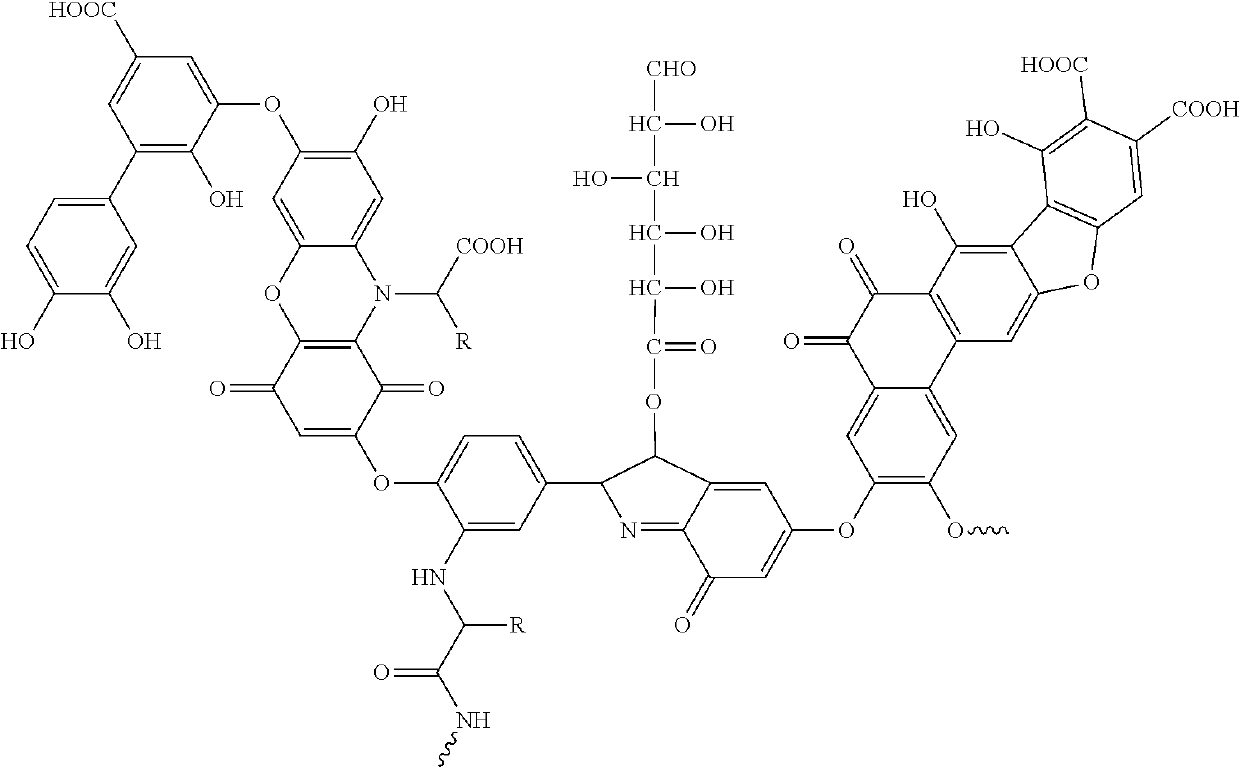Compositions and methods for remediating hydrogen sulfide in hydrocarbon based liquids
a technology of hydrocarbon based liquids and hydrogen sulfide, which is applied in the nature of treatment water, waste water treatment from quaries, and refining with aqueous alkaline solutions to achieve the effects of safe and efficient remediation of h2s, reduced toxicity, and reduced toxicity
- Summary
- Abstract
- Description
- Claims
- Application Information
AI Technical Summary
Benefits of technology
Problems solved by technology
Method used
Image
Examples
example 11
[0083]In this example, the liquid being treated was a light, hydrotreated, petroleum distillate with an API gravity of 53° containing 40,000 ppm H2S vapor (as determined by ASTM D5705), 41 ppm mercaptan sulfurs (as determined by UOP163) and 33 ppm of H2S in liquid (as determined by UOP163), while the same formulation of the modified treatment solution was used as in Examples 1-10, and was added at a dosage rate of 10 ml / liter of the liquid being treated (1% based on volume). All testing for this Example was performed by a major, accredited testing lab. The several components of the treatment solution were combined prior to being added to the petroleum distillate, and once added were permitted to naturally migrate through the petroleum distillate without any mixing at a temperature of approximately 21° C. The treated liquid was tested for H2S content thirteen (13) minutes after the treatment solution was added thereto, and the results showed 0 ppm H2S vapor (as determined by ASTM D57...
example 12
[0085]In this Example, the treatment solution used in Examples 1-11 was tested for corrosiveness of aluminum and steel specimens via testing method UNECE Section 37.4. The treatment solution was added to a crude oil with an API gravity of 33° containing 4,000 ppm H2S vapor at a dosage rate of 10 ml / liter of the chide oil (1% based on volume) and allowed to migrate through the crude oil for 30 minutes. Then the specimens were either immersed or half immersed in the treated liquid, or exposed to a gas of the treated crude oil, and in each case the testing lasted for 168 hours. Mass loss of the specimens was detected after 168 and for each tested specimen 0.0% mass loss was detected. Essentially, it was found that the crude oil as treated with approximately 1.5 times the normal dosage of the treatment solution was not corrosive to metals. The tests were also conducted for the crude oil which was treated with higher dosages of the treatment solution, and it was not until the dosage amou...
PUM
| Property | Measurement | Unit |
|---|---|---|
| wt % | aaaaa | aaaaa |
| freezing temperature | aaaaa | aaaaa |
| time | aaaaa | aaaaa |
Abstract
Description
Claims
Application Information
 Login to View More
Login to View More - R&D
- Intellectual Property
- Life Sciences
- Materials
- Tech Scout
- Unparalleled Data Quality
- Higher Quality Content
- 60% Fewer Hallucinations
Browse by: Latest US Patents, China's latest patents, Technical Efficacy Thesaurus, Application Domain, Technology Topic, Popular Technical Reports.
© 2025 PatSnap. All rights reserved.Legal|Privacy policy|Modern Slavery Act Transparency Statement|Sitemap|About US| Contact US: help@patsnap.com

